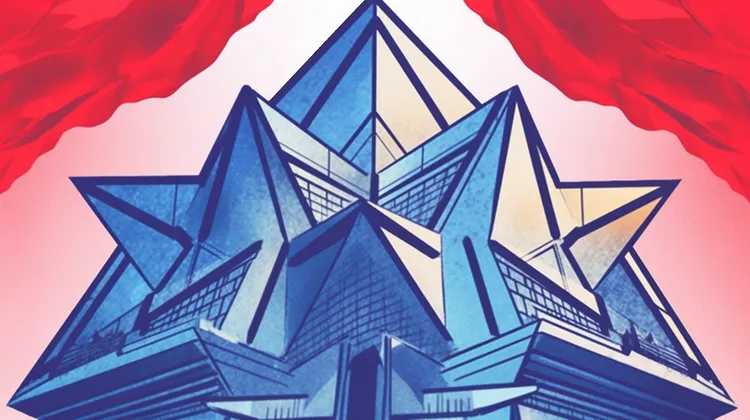The blockchain phenomenon and the world of Non-Fungible Tokens (NFTs) have mesmerized the digital landscape with their potential for innovation and investment. In the midst of this excitement, Some NFT wallets—once brimming with activity—have gone silent. Over time, various factors such as waning interest, market volatility, or a lack of understanding of how to capitalize on these assets have led to a sizable number of NFT holders disengaging, resulting in what the community refers to as ‘dead wallets.’ The question becomes, then, how does one reinvigorate these dormant treasuries of digital art and collectibles? The answer may lie in a single, focused approach: community engagement.
Community, being the bedrock of the NFT ecosystem, holds the power to breathe new life into inactive wallets. As the blockchain space is inherently social, leveraging community networks and platforms can revitalize holder interest and utility for their NFTs. Let’s delve deeper into how enhancing engagement can reignite the spark in these digital wallets.
Firstly, one must understand that the value of NFTs is not only in their rarity or artistic merit but also in the experiences and networks they unlock. Projects that understand this create a sense of belonging for their holders, often keeping them active and invested in the community. To lure back inactive users, projects can organize exclusive events, such as virtual meet-ups, AMAs (Ask Me Anything), or behind-the-scenes looks at new works, which are only accessible via the NFTs in one’s wallet. Not only does this create immediate utility for the token, but it also piques the interest of the holder.
Secondly, educational initiatives play a critical role. A common barrier to continued engagement is a lack of understanding of the NFT space. By providing accessible, clear, and engaging educational content, projects can help users navigate the complexities of digital ownership, smart contracts, and the value propositions of the NFTs they hold. Education can fuel reinvestment in a space that otherwise might seem overwhelming or intimidating.
Another way to revitalize dead wallets is by introducing gamification elements into the NFT ecosystem. Gamified experiences such as scavenger hunts, digital puzzles, or other challenges can incentivize community members to re-engage and utilize their digital assets creatively. These activities often encourage participants to explore and interact, re-establishing their connection to their collection and to others in the space.
Frequent and transparent communication is vital. Projects should maintain a constant dialogue with their community, especially targeting those with inactive wallets. Personalized outreach efforts, such as newsletters or direct messages, can remind holders of the benefits and opportunities available to them. Consistent updates on the project’s developments and how these advances affect the NFT holders can re-spark interest and reaffirm the project’s commitment to their community.
Another avenue to consider is collaborative efforts. Projects could partner with other NFT creators or brands, offering exclusive content, co-created items, or crossover events. Such initiatives give collectors new reasons to utilize their NFTs and engage with different communities. It allows for the sharing of audiences and the injection of fresh enthusiasm into the ecosystem.
A pivot in strategy towards a more user-first approach can also be instrumental. Projects can listen to feedback and pivot their offerings to match what their community truly wants. This might mean altering the roadmap, creating new NFTs that provide more tangible benefits, or even revamping the project’s whole concept to align better with the interests of the community.
Airdrops have also become a popular tool to incentivize wallet activity. By sending free or additional tokens to wallet holders, projects can encourage them to actively participate in new launches or to rekindle their interest in what the project is doing. While airdrops can be an immediate attention grabber, they should be strategically used to ensure they contribute to long-term value and engagement.
Incentivizing trades via marketplace collaborations is another way to boost wallet activity. Exclusive discounts or fee rebates for trading NFTs can prompt collectors to revisit their wallets and examine their holdings. This can lead to rebalanced portfolios and renewed interest in the marketplace.
Technology upgrades are not to be overlooked. Streamlining wallet interfaces and simplifying transaction processes reduces the friction for less tech-savvy users. A user-friendly experience can invite dormant users to rediscover the ease and joy of managing their digital assets.
Finally, community polls and decision-making powers can hand ownership of the project’s direction back to the holders. By giving them a voice in the journey, you can transform passive collectors into active participants who have a stake in the project’s success.
Reviving dead NFT wallets demands a multifaceted approach, but by focusing primarily on community engagement and ensuring the holders feel valued, you set the stage for a dynamic and invested user base. Tailoring strategies to suit the unique needs of your audience and keeping the community at the heart of every initiative are key to reawakening the potential that lies dormant within these virtual caches of the blockchain world. As the NFT world continues to evolve, it’ll be the projects that cherish and stimulate their communities that will see their wallets—and the ecosystem at large—flourish.




Giving holders a say in a project’s journey? Now that’s empowering! Democracy in the digital art world.
The idea of the community shaping the project’s roadmap is really empowering. Makes you feel like part of something big!
Transparent communication is great until it’s just endless updates with no real substance. More hype, less help.
Community polls and giving us a ‘voice’ won’t suddenly make these digital trinkets worth the fortunes some have paid. Too optimistic.
It’s all about building a strong, connected community. Transparency and communication can turn a “dead wallet” into an active hub!
Making wallets more user-friendly is the first step to getting people back on board. Cheers to simplicity!